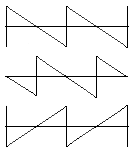barthman.de
Well-known member
Hi,
I'm building a rack for 6 nice old preamps. I added phase switch and output transformers. Now I'd like to test the phase shift / relation to eliminate mistakes at the wiring. There must be the same phase relation on output of the rack like on the input of the preamp if phase switch is turning off. But how can I test this? I have multimeter (Fluke), sinus/square-generator and an oscilloscope. Can somebody help?
I'm building a rack for 6 nice old preamps. I added phase switch and output transformers. Now I'd like to test the phase shift / relation to eliminate mistakes at the wiring. There must be the same phase relation on output of the rack like on the input of the preamp if phase switch is turning off. But how can I test this? I have multimeter (Fluke), sinus/square-generator and an oscilloscope. Can somebody help?






